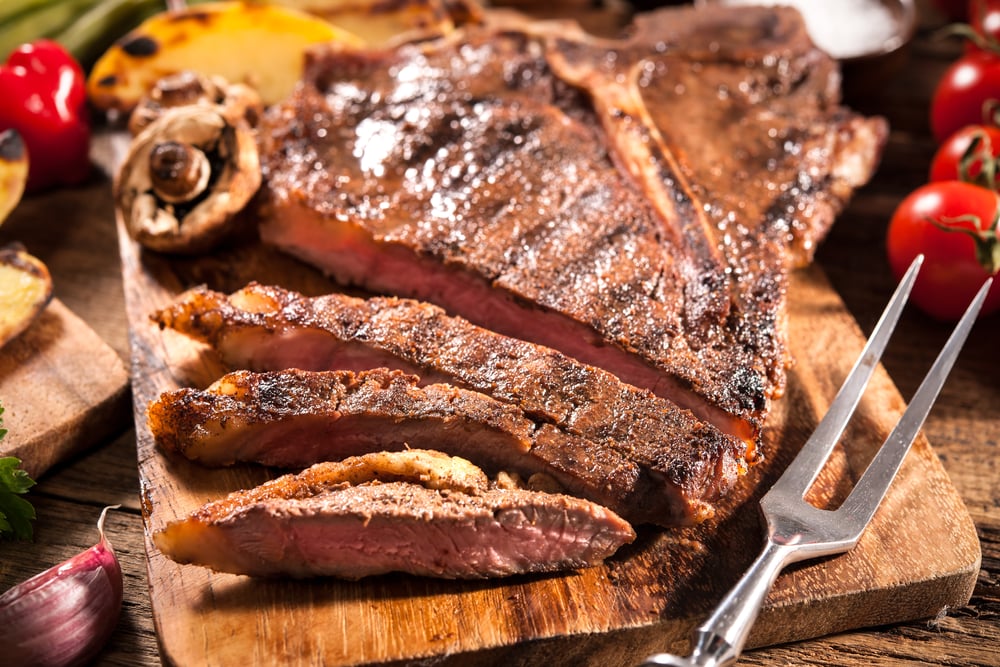The Porterhouse steak, one of the most popular steaks in American restaurants, is such a substantial cut of meat that a single order often can serve two people. The USDA requires that, to qualify as a Porterhouse, the steak must be cut from the short loin (or sirloin) and be at least 1.25-inches thick (for comparison, a T-bone steak is only 0.25-inches thick), or roughly 16 ounces in weight, but they can be even larger—at times 24 ounces or even 48 ounces. The meat on one side of the bone at the center of the cut is a filet and a New York strip steak is on the other.
While what constitutes a Porterhouse steak is well known, why it’s called “Porterhouse” is less clear. In the mid eighteenth-century a “porter-house” was a kind of restaurant where the dark beer known as porter was served. The term was only first associated with a particular cut of beef, however, in the early nineteenth century. One of the earliest claims attributes it to Martin Morrison, proprietor of the Porter House inn on Pearl Street in Manhattan, in 1814. Some people, however, claim that it derived its name from Porter’s Hotel in Cambridge, Massachusetts, which was run by Zachariah Porter later in the century. Accoring to this legend, Porter would challenge guests to eat steaks of enormous sizes, and, as more and more succeeded, he successively increased the steaks’ weight and thickness. In the end, the cut now known as the “Porterhouse” was the last of the steaks successfully tackled (and digested) by one of his patrons.
According to some sources, it was first listed on a steakhouse menu in New York City around 1840, though this is probably apocryphal (the oldest extant menu that lists “Porterhouse Steak” dates from 1900, from the Metropolitan Club in Washington DC). The first occurrence of the term in print was in 1842, in American writer Cornelius Mathews’s novel The Career of Puffer Hopkins, when a character orders “a small porter-house steak, without the bone, for this time only,” though this description sounds quite unlike the large, bone-in steak known as “Porterhouse” today.
Perhaps the most intriguing theory, however, credits the celebrated English novelist Charles Dickens with naming the cut by accident. According to Southern Lake Erie region historian and lawyer Hewson L. Peeke, Dickens had been served the steak at the Porter House hotel in Sandusky, Ohio, during his famous 1842 tour of America (in 1923, Dickens’s signature was actually discovered on the guest register for the Porter House). The author took a liking to the cut and when he arrived at his next stop, in Buffalo, New York, he put in an order at a restaurant for “a steak like you get at the Porter house in Sandusky.” The chef obliged and soon thereafter the restaurant owner, capitalizing on Dickens’s enormous celebrity, began aggressively advertising that his establishment sold “Porterhouse steak like Charles Dickens likes.”







